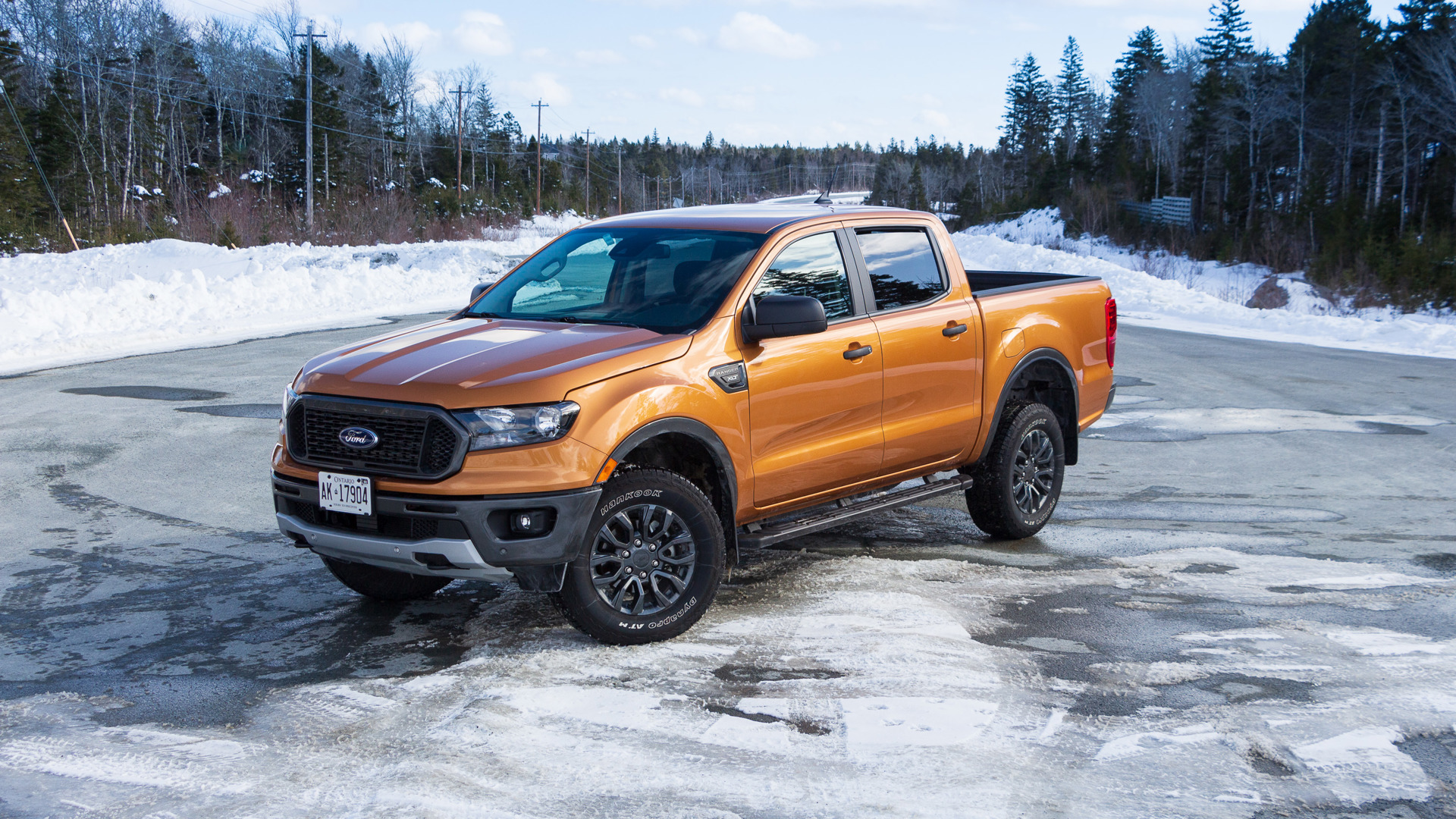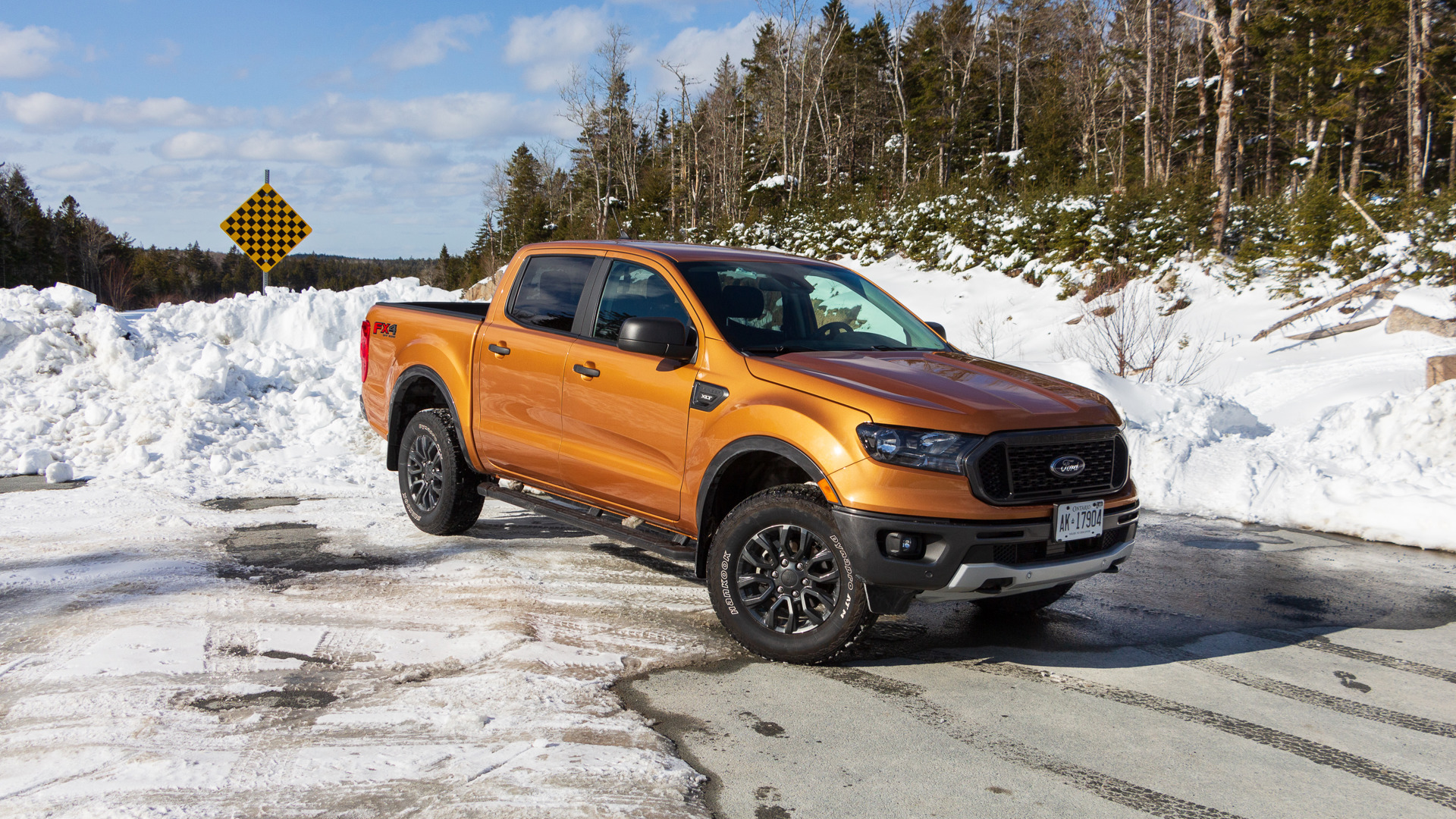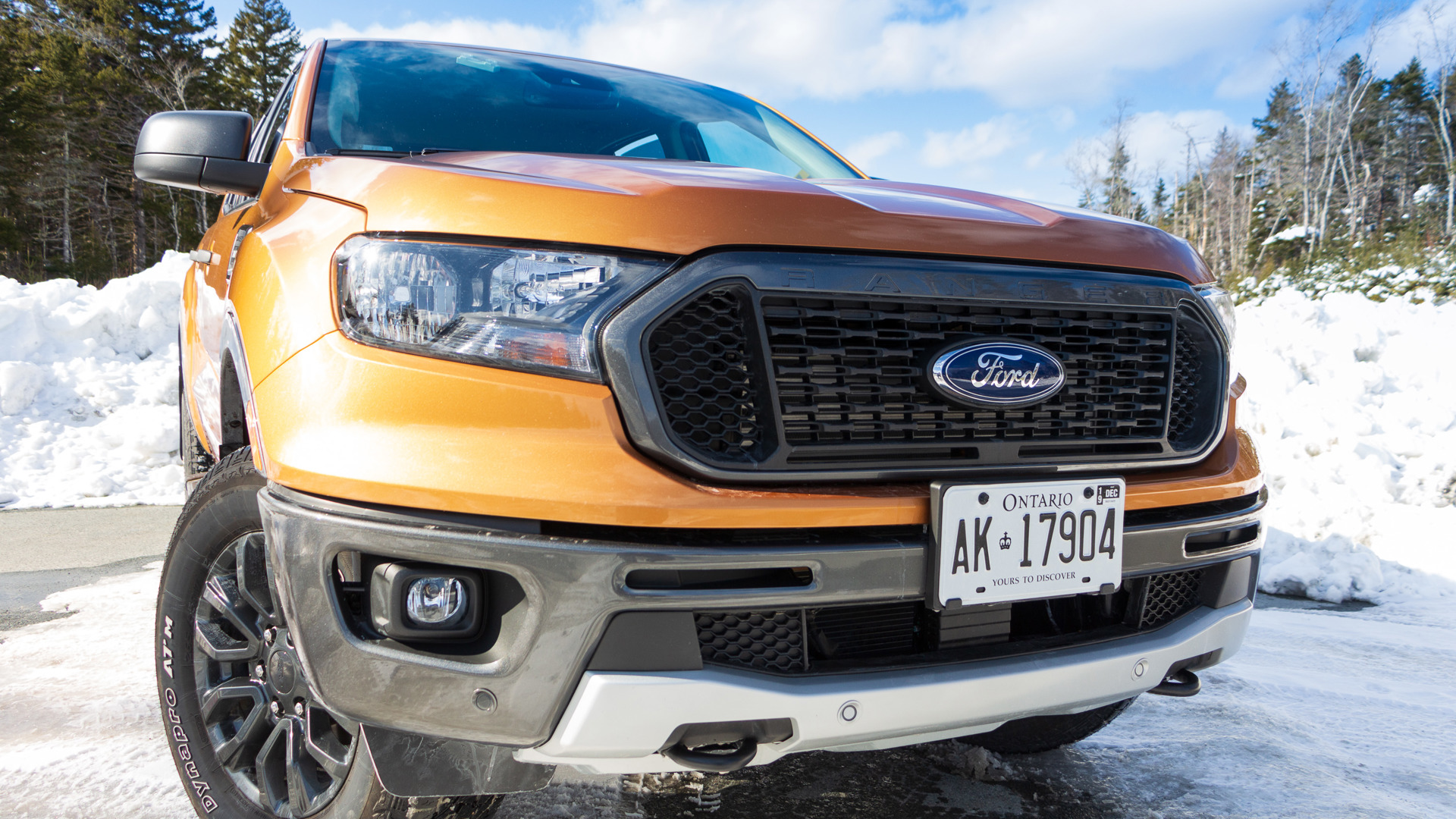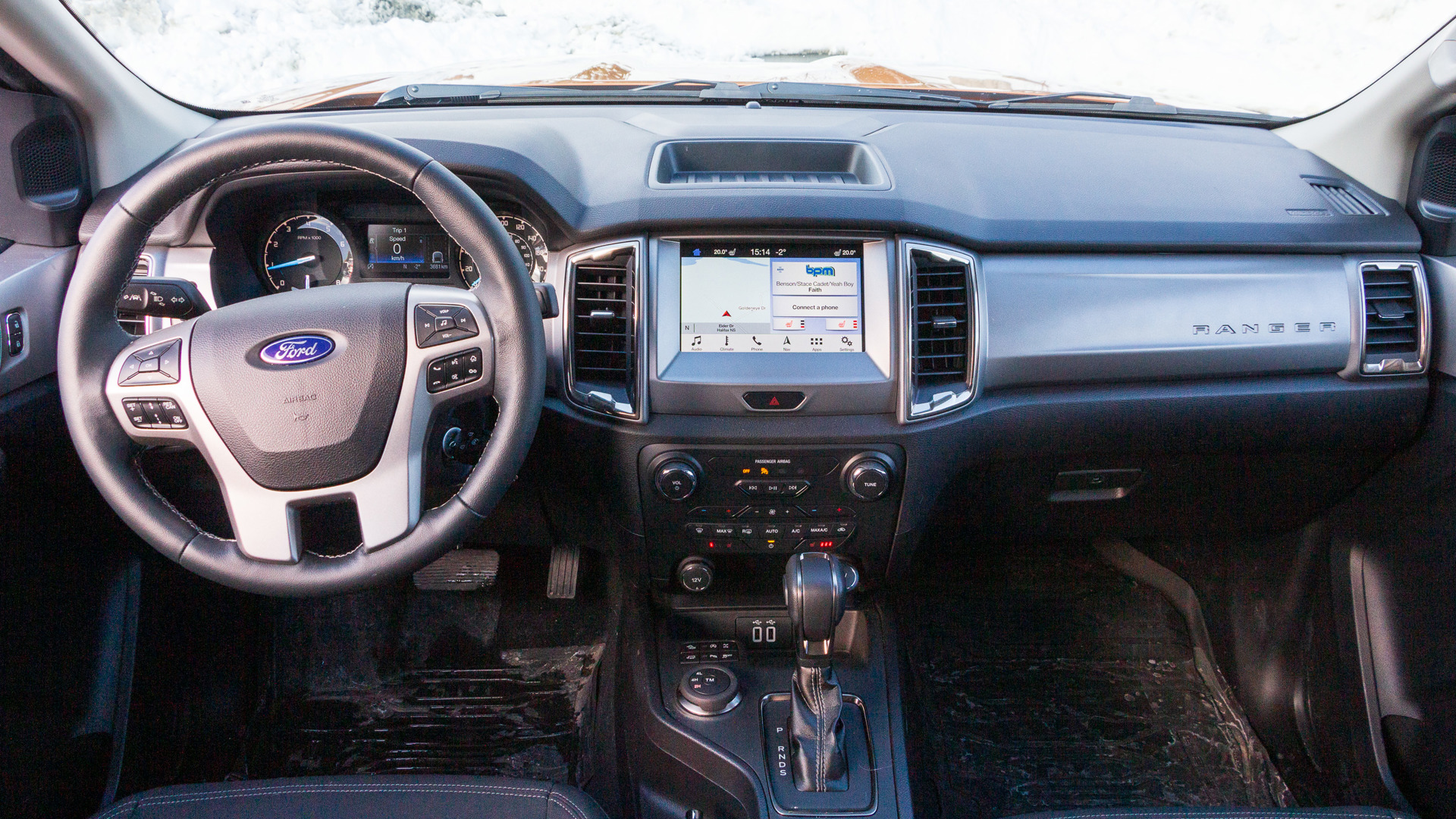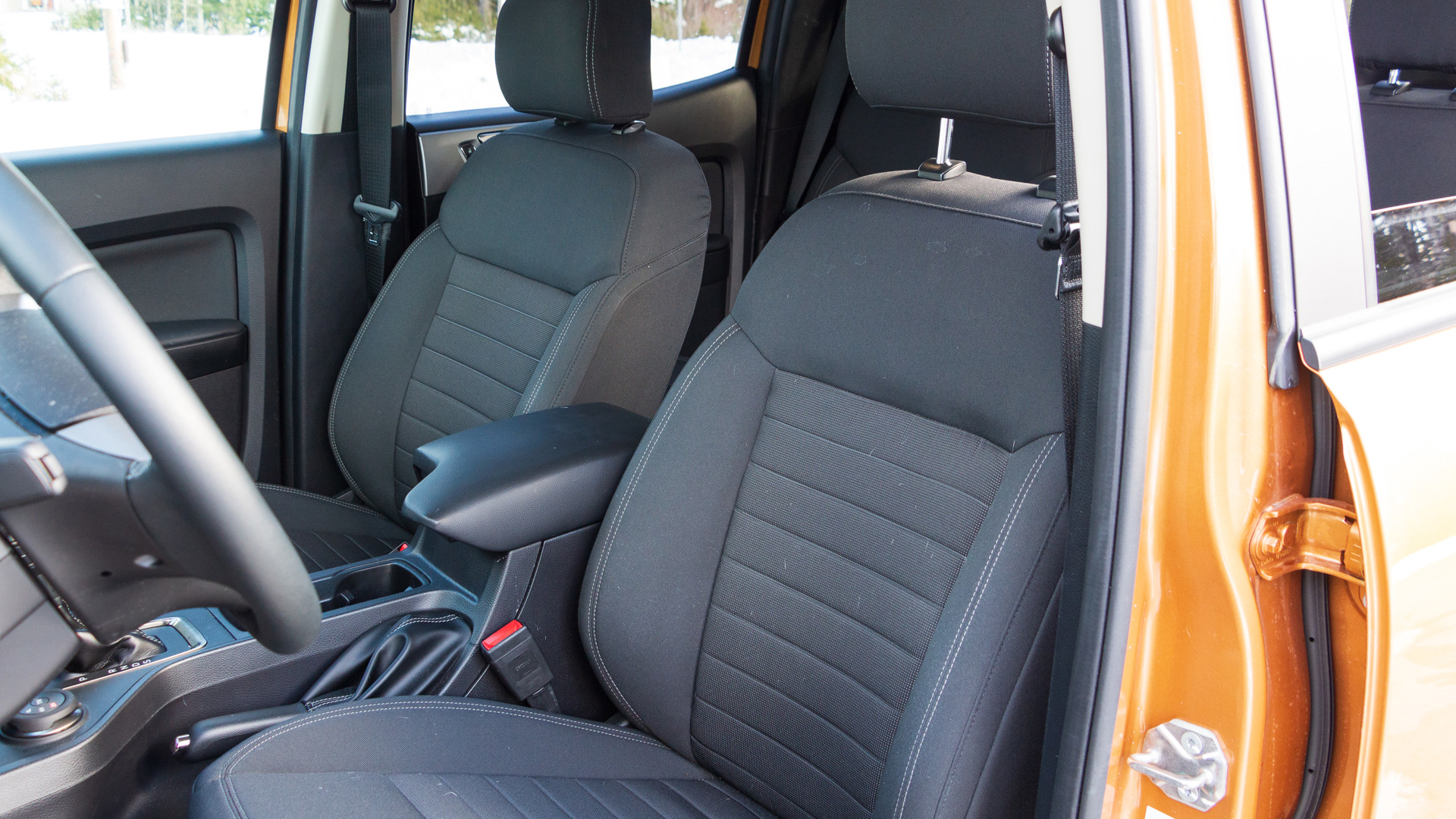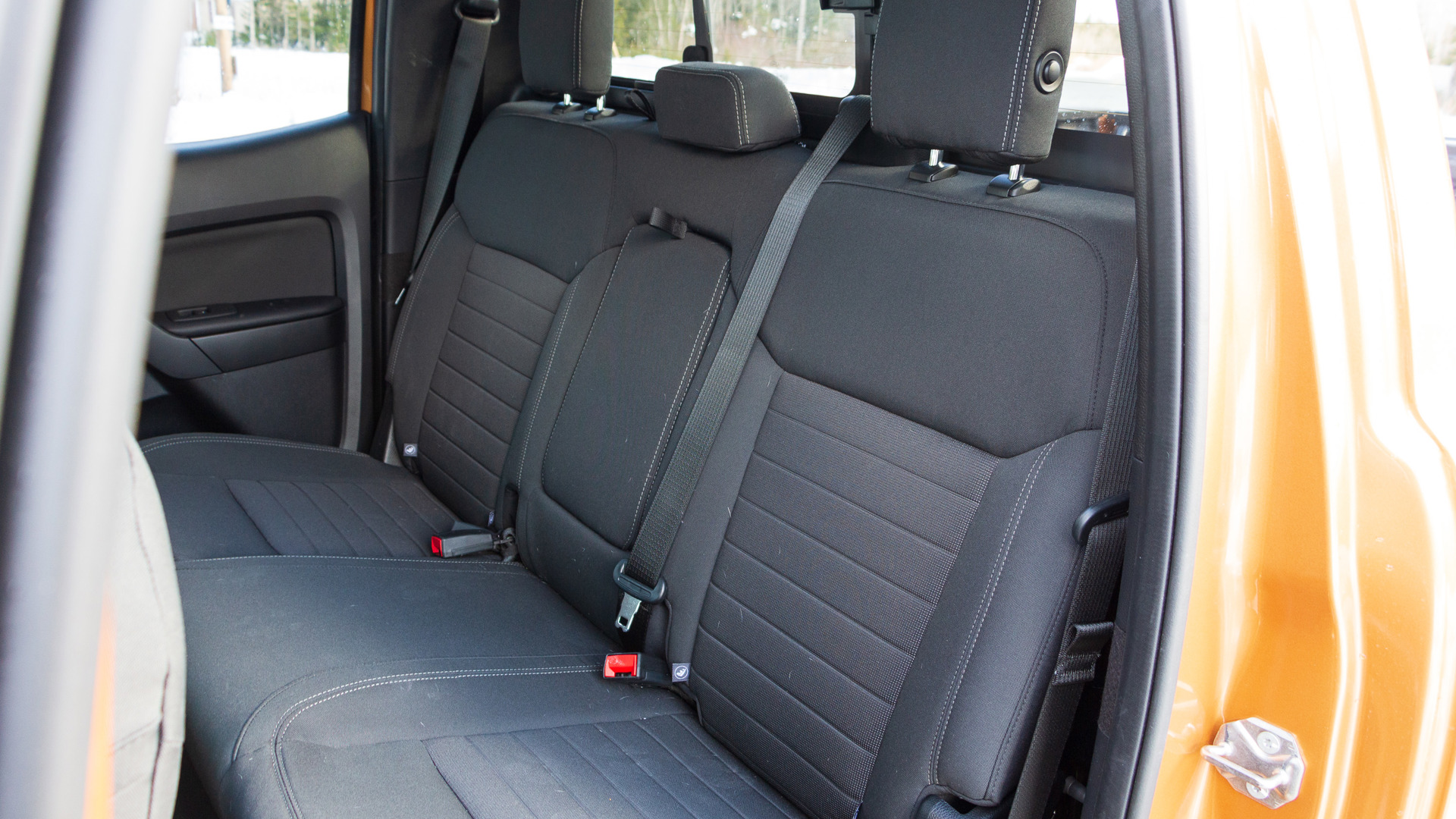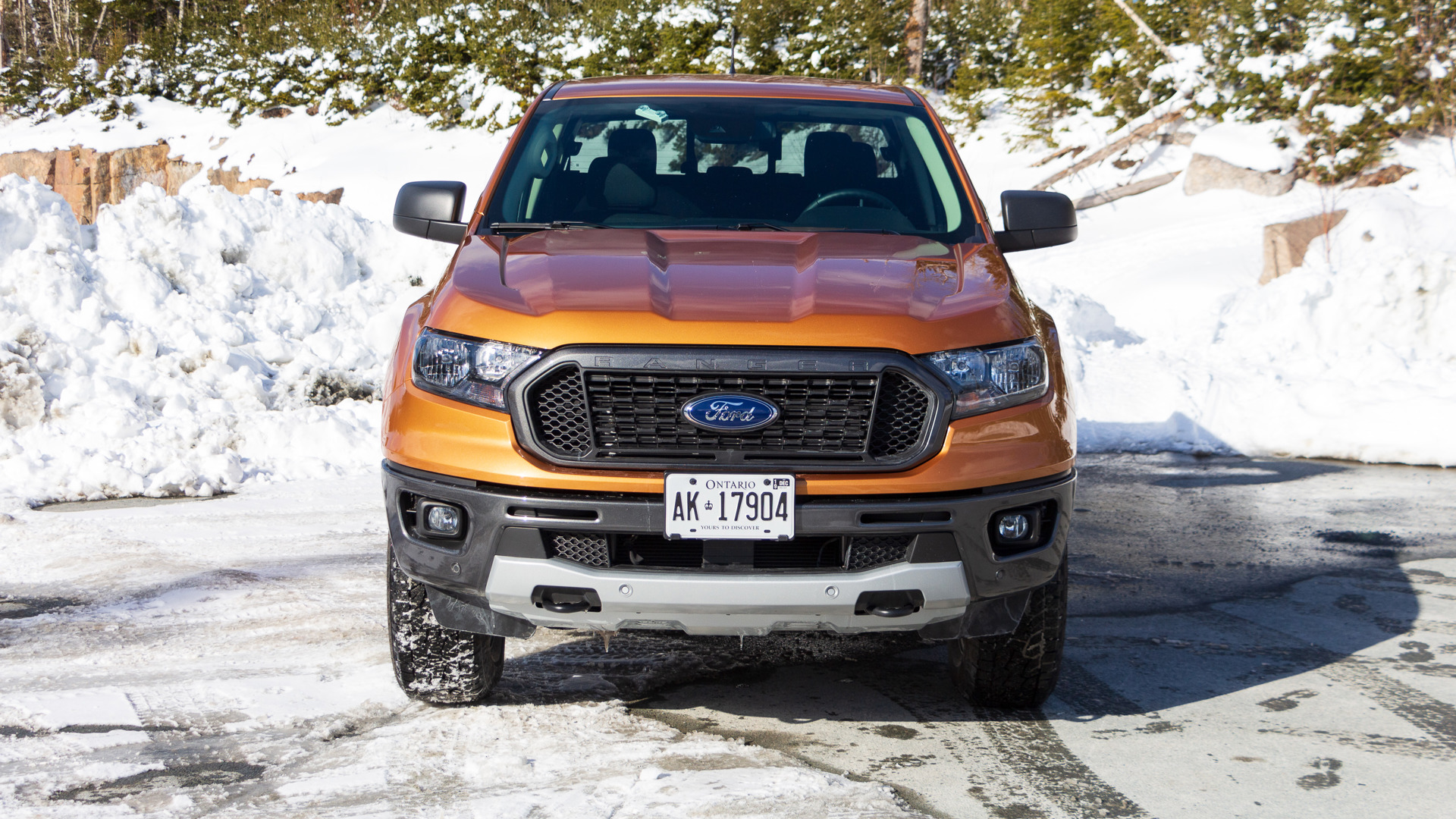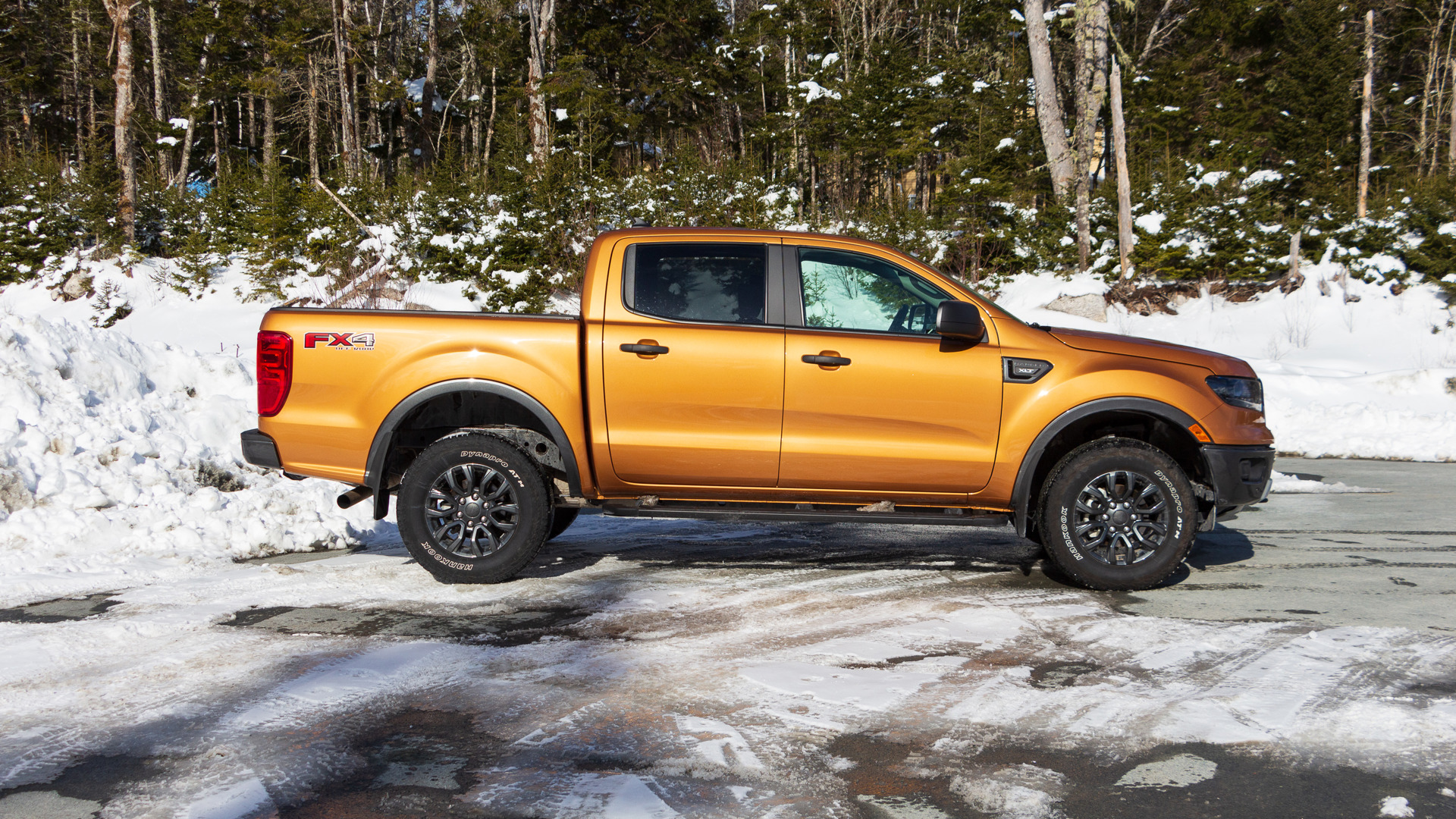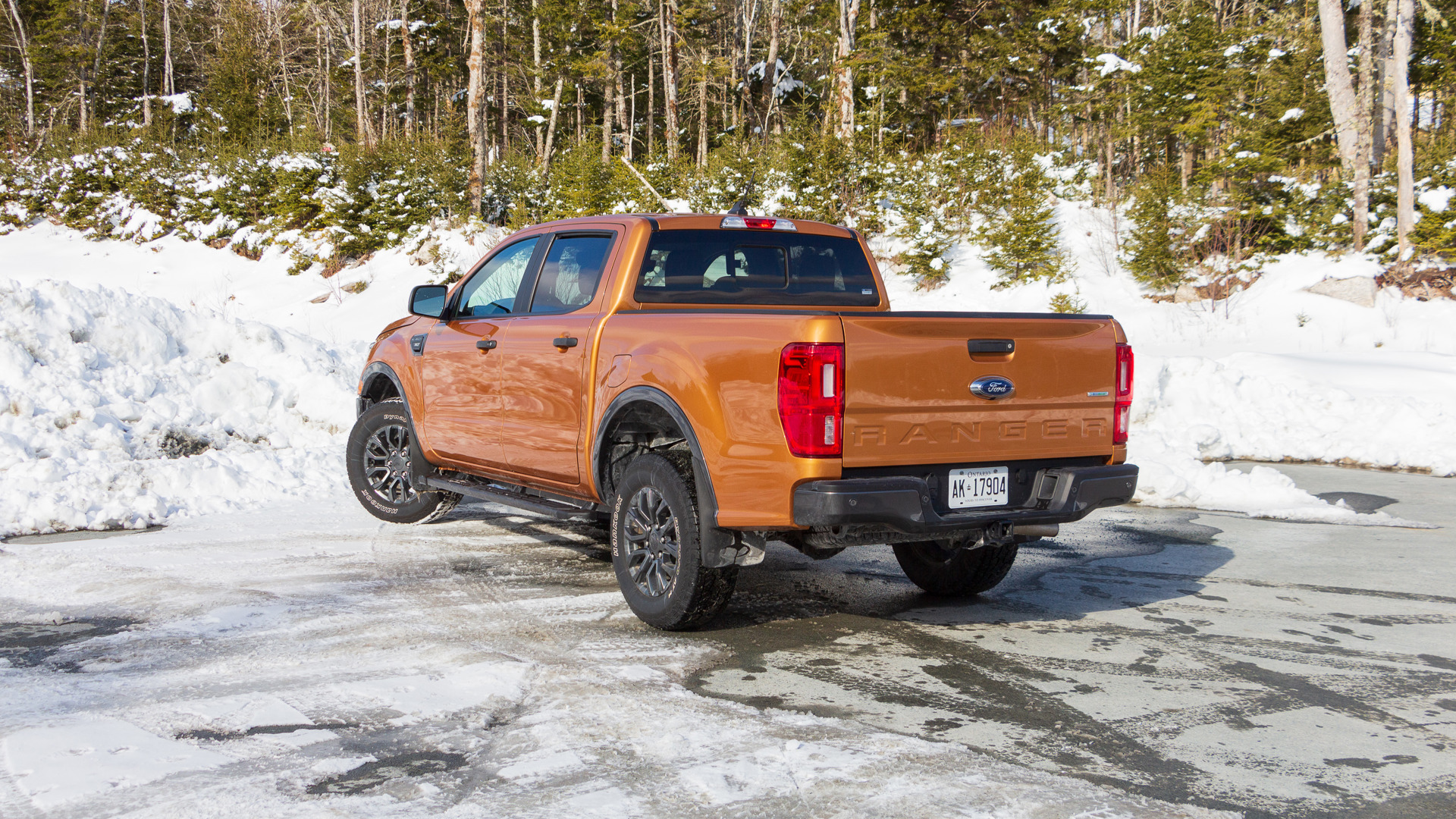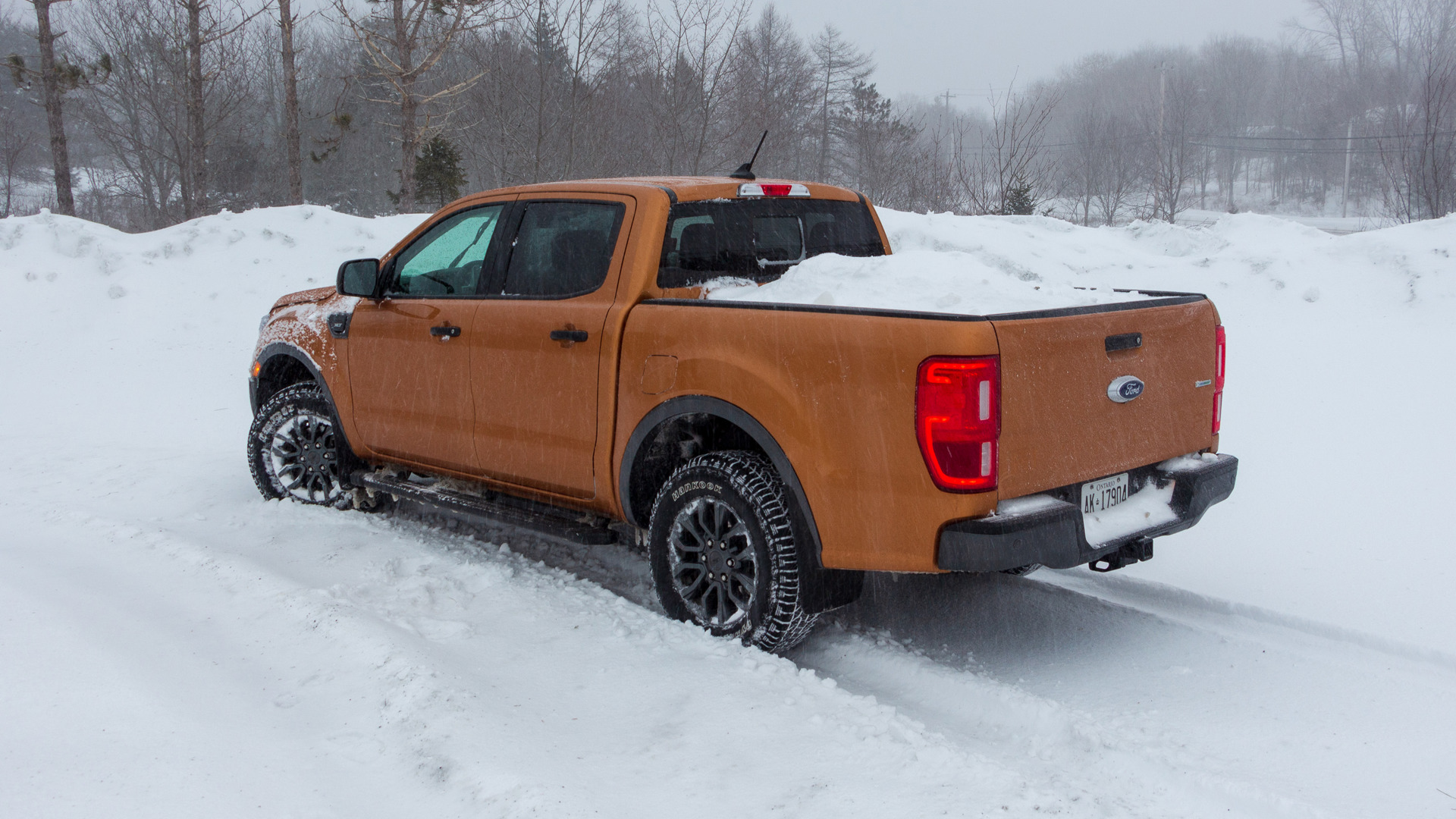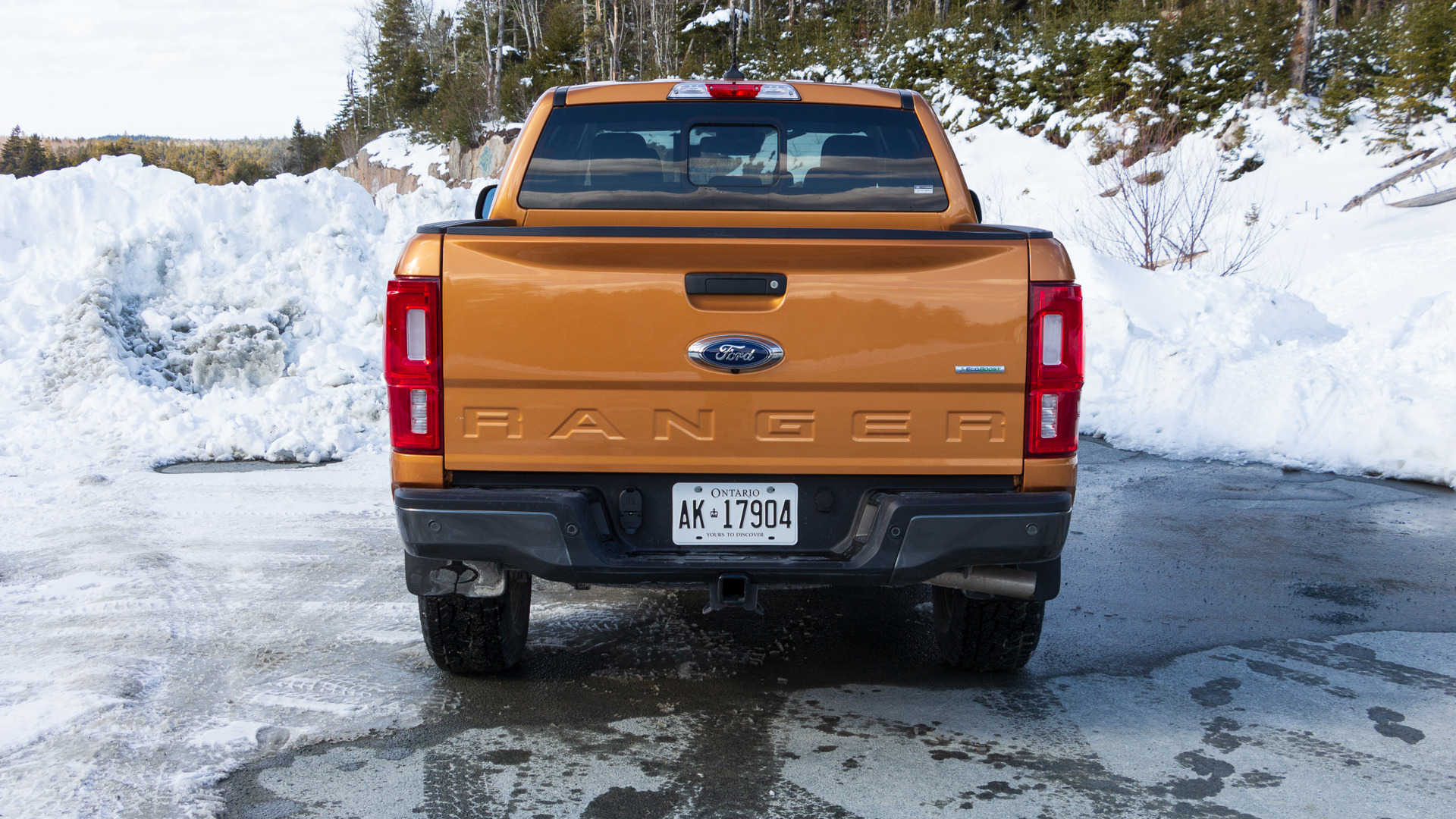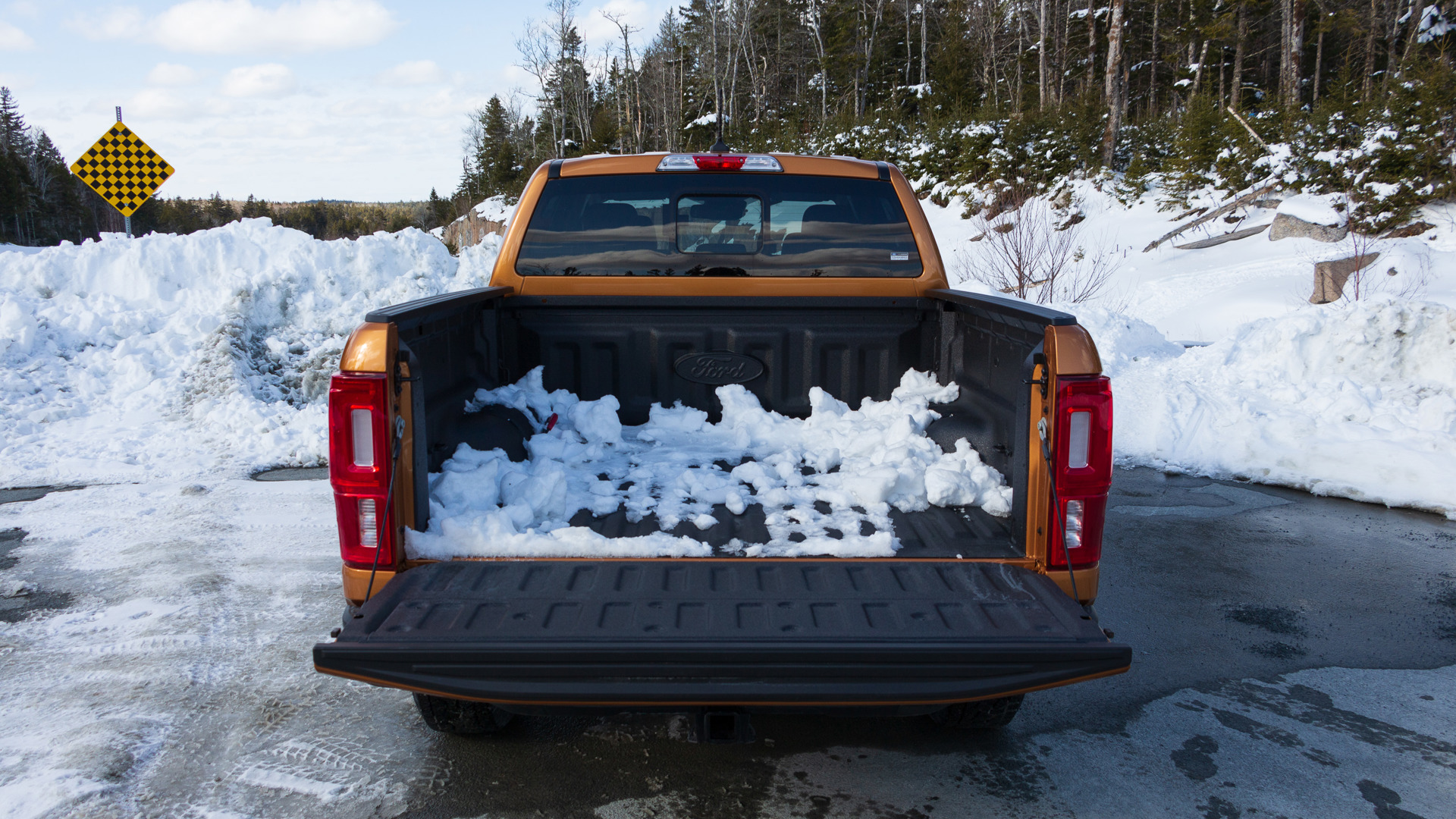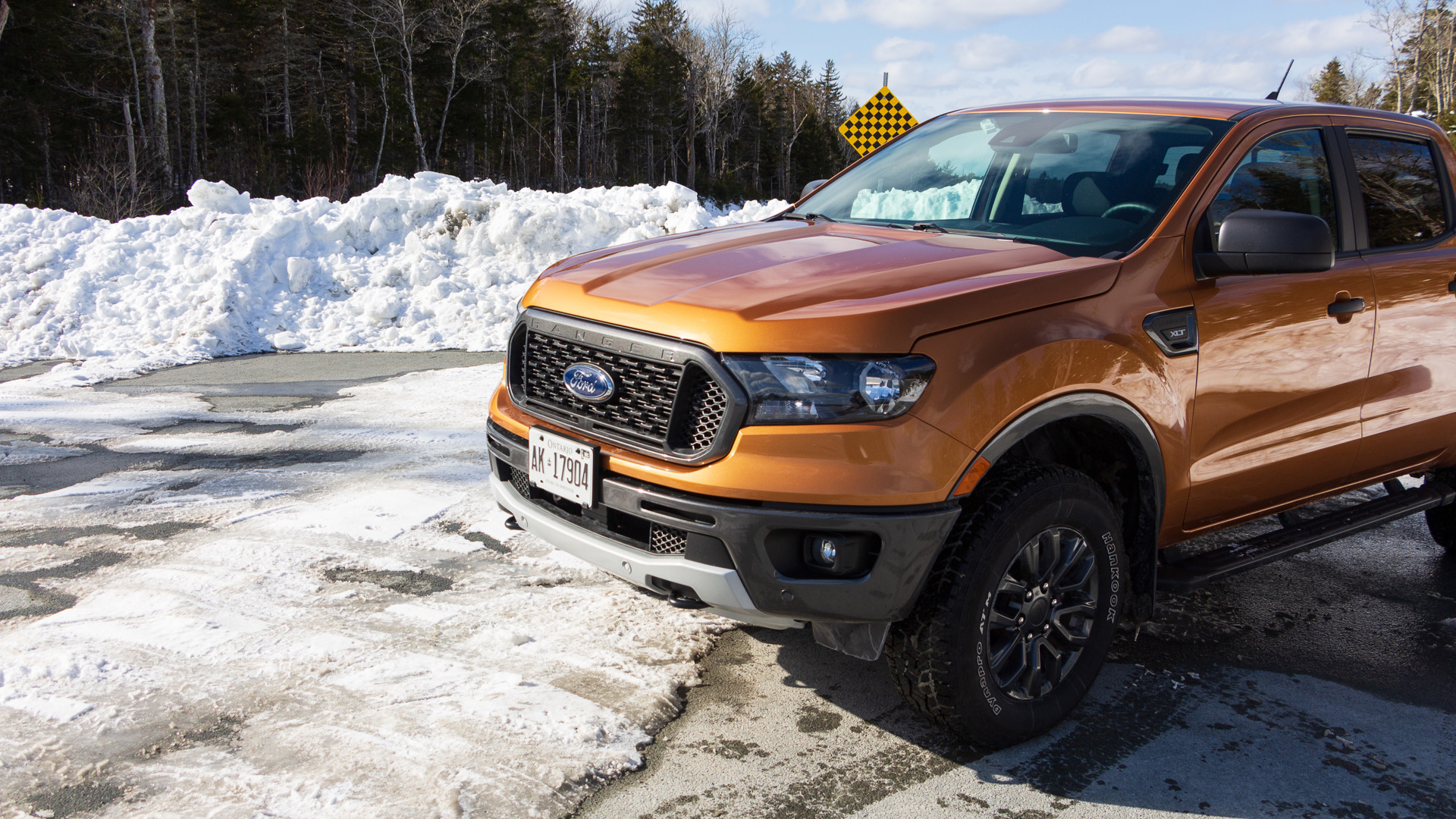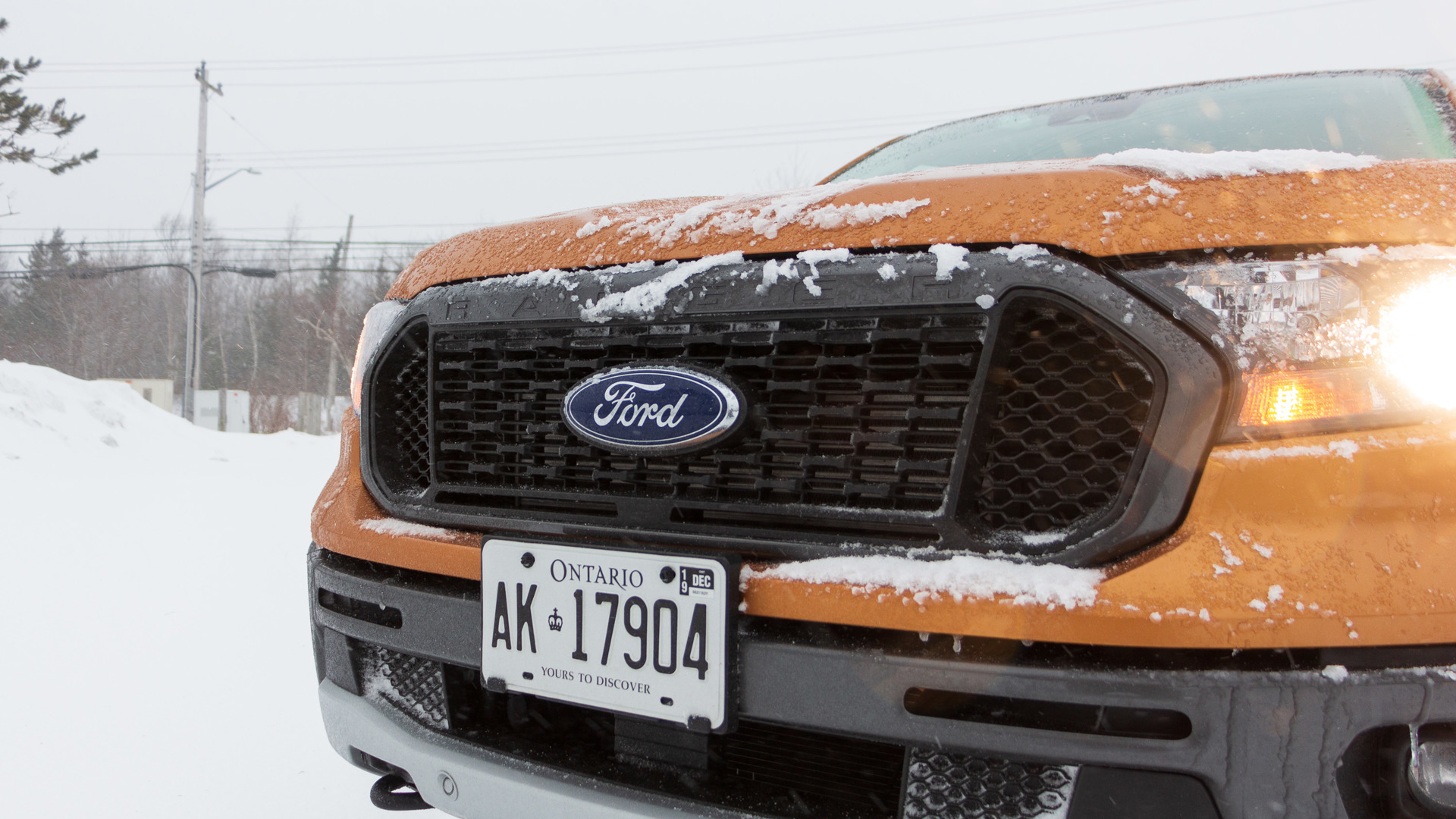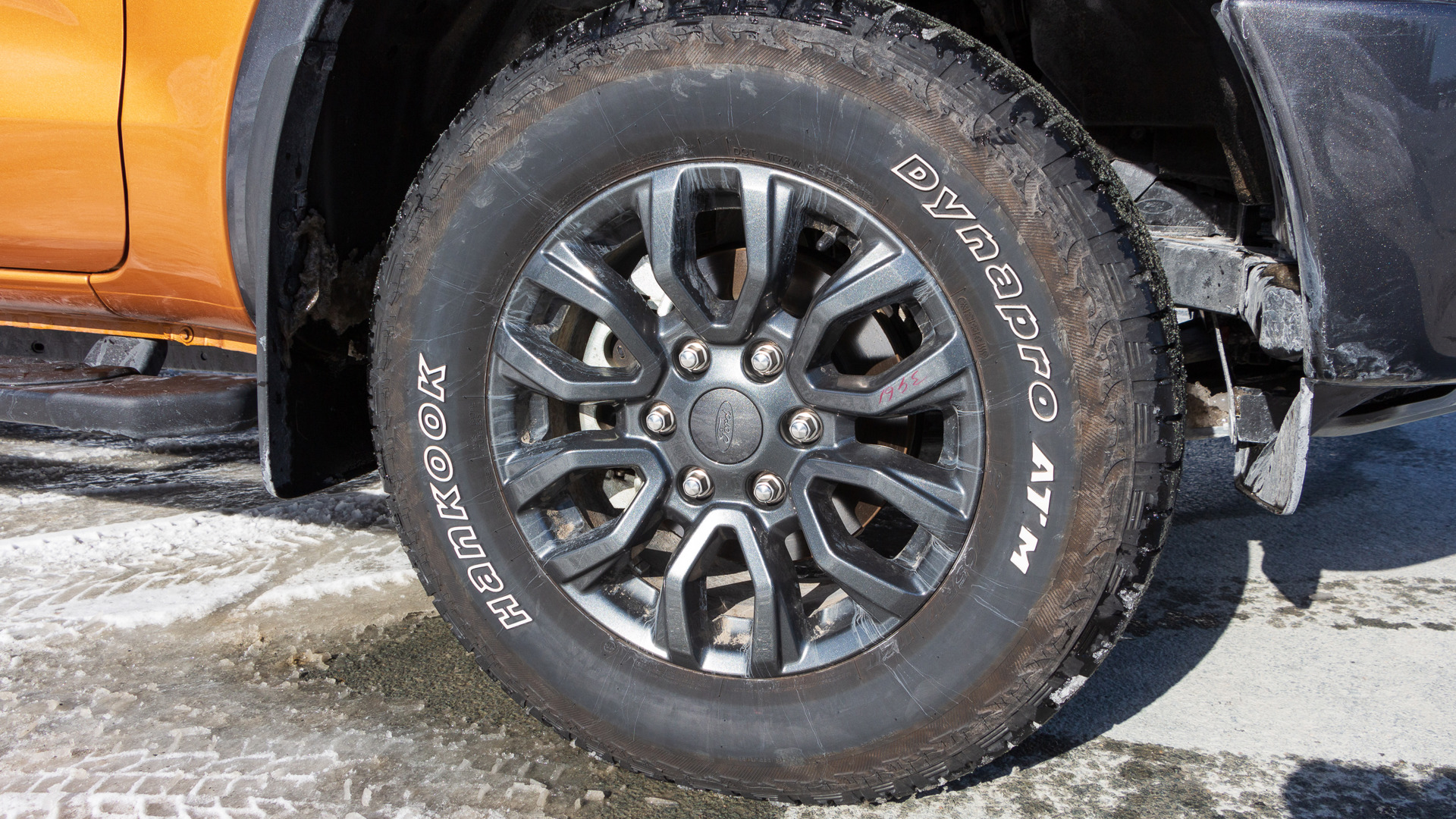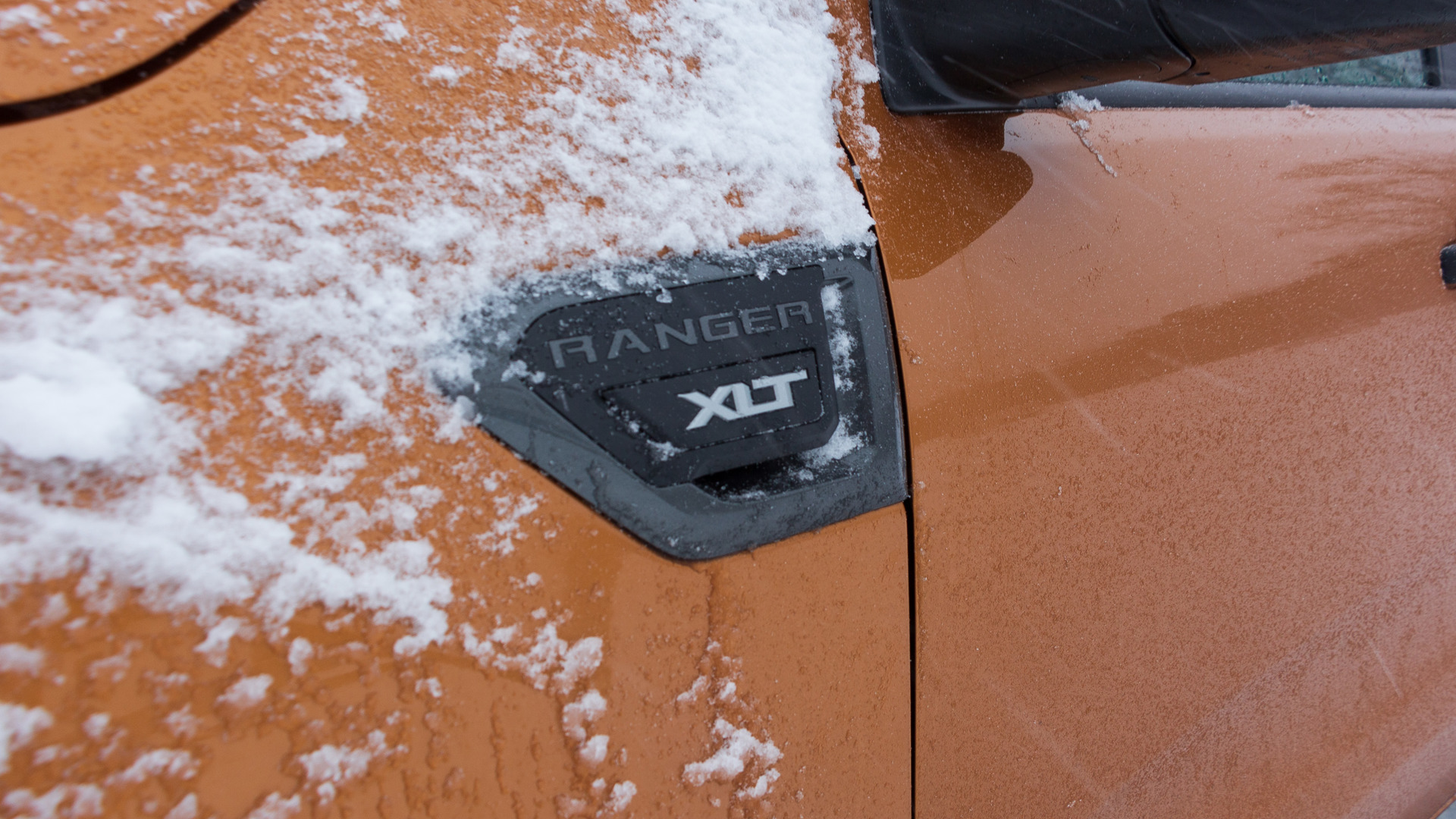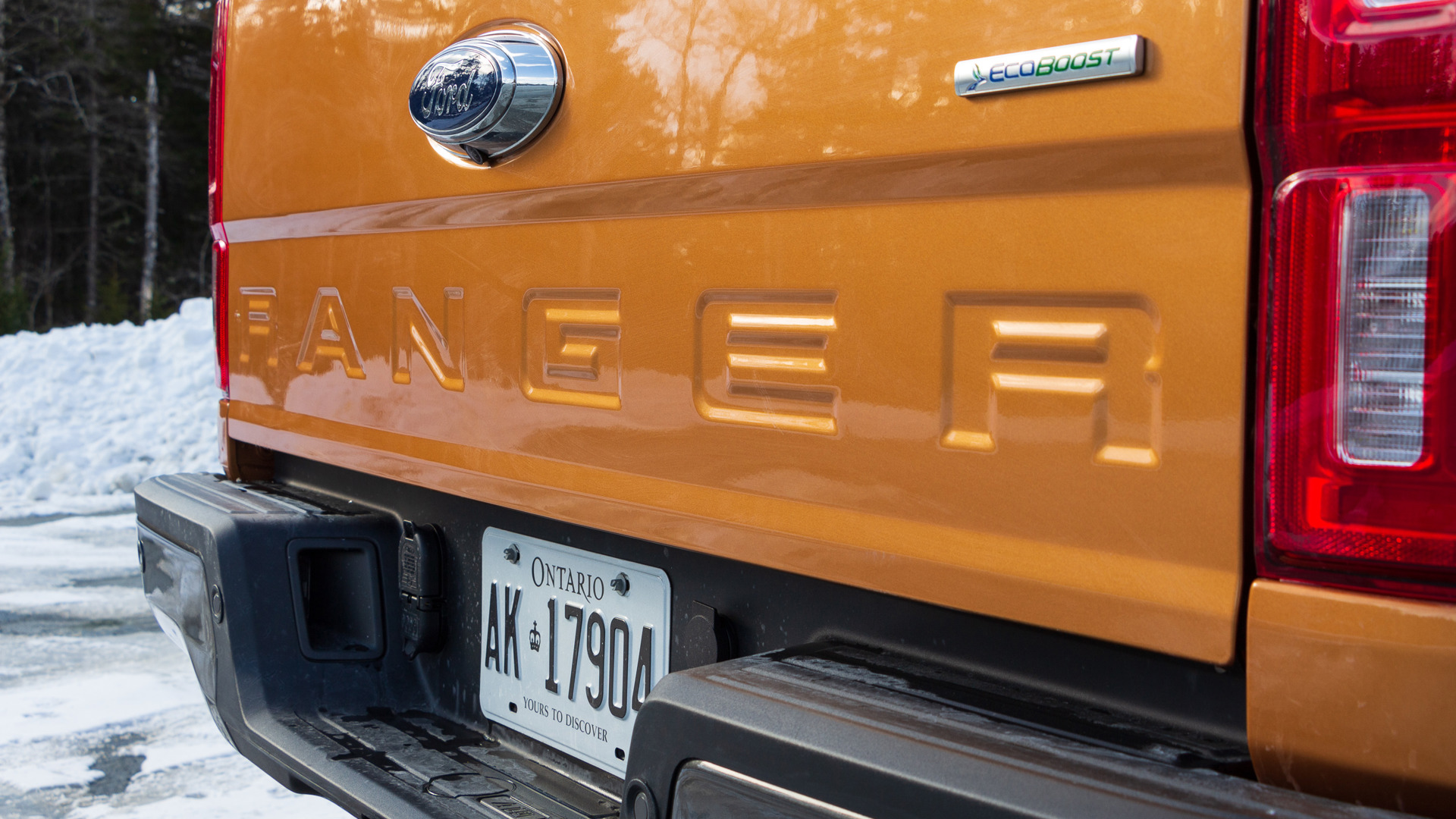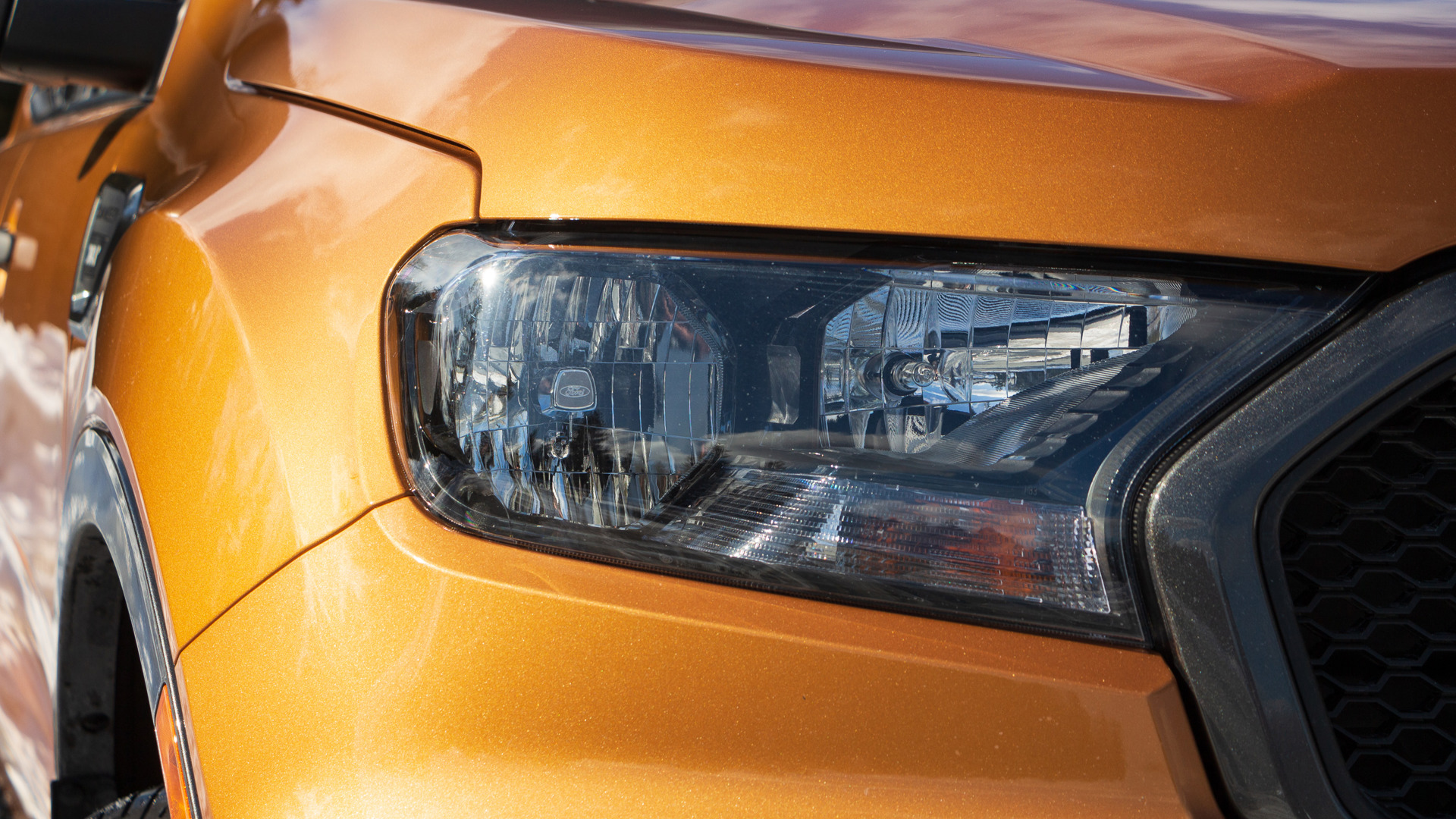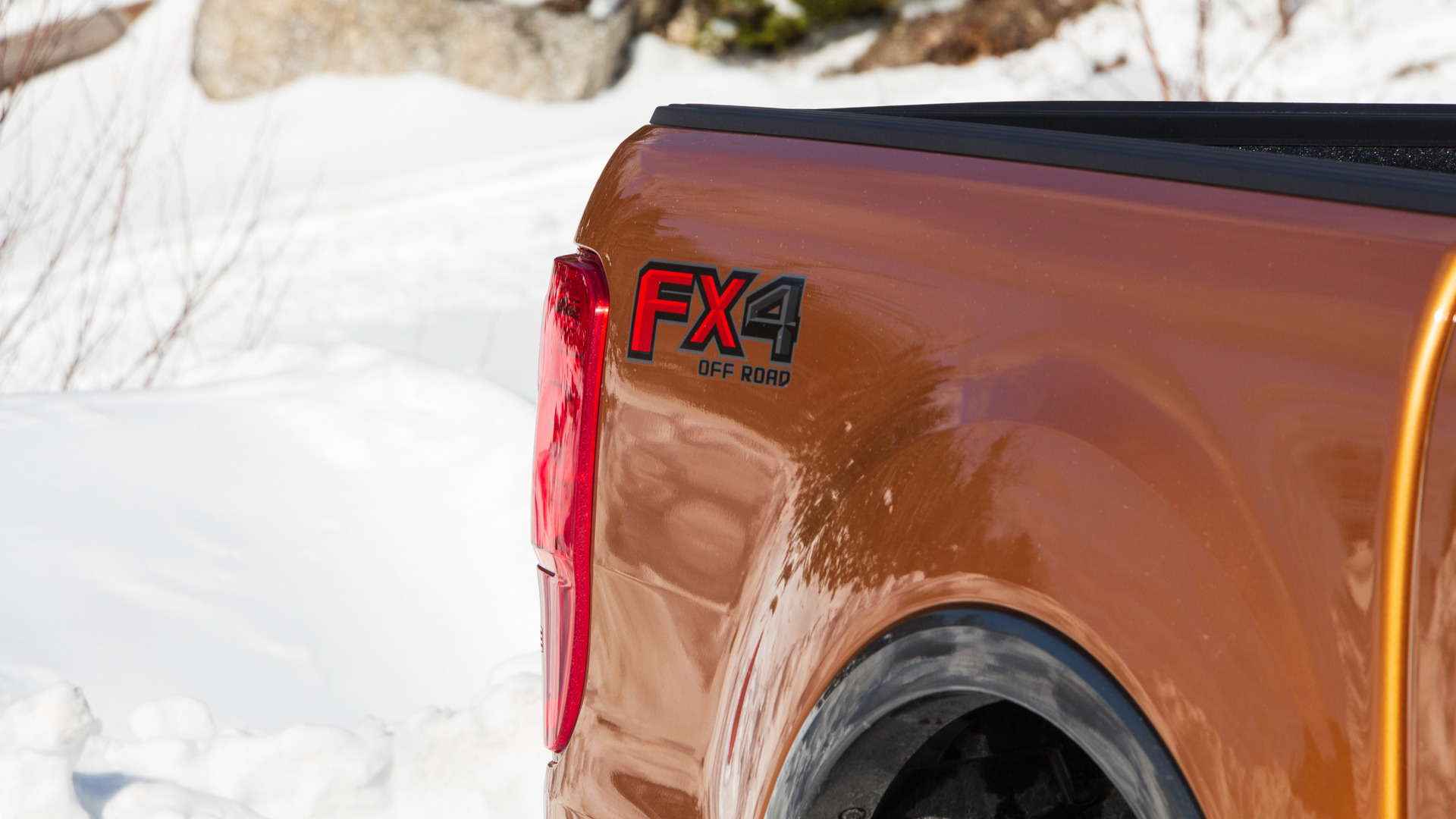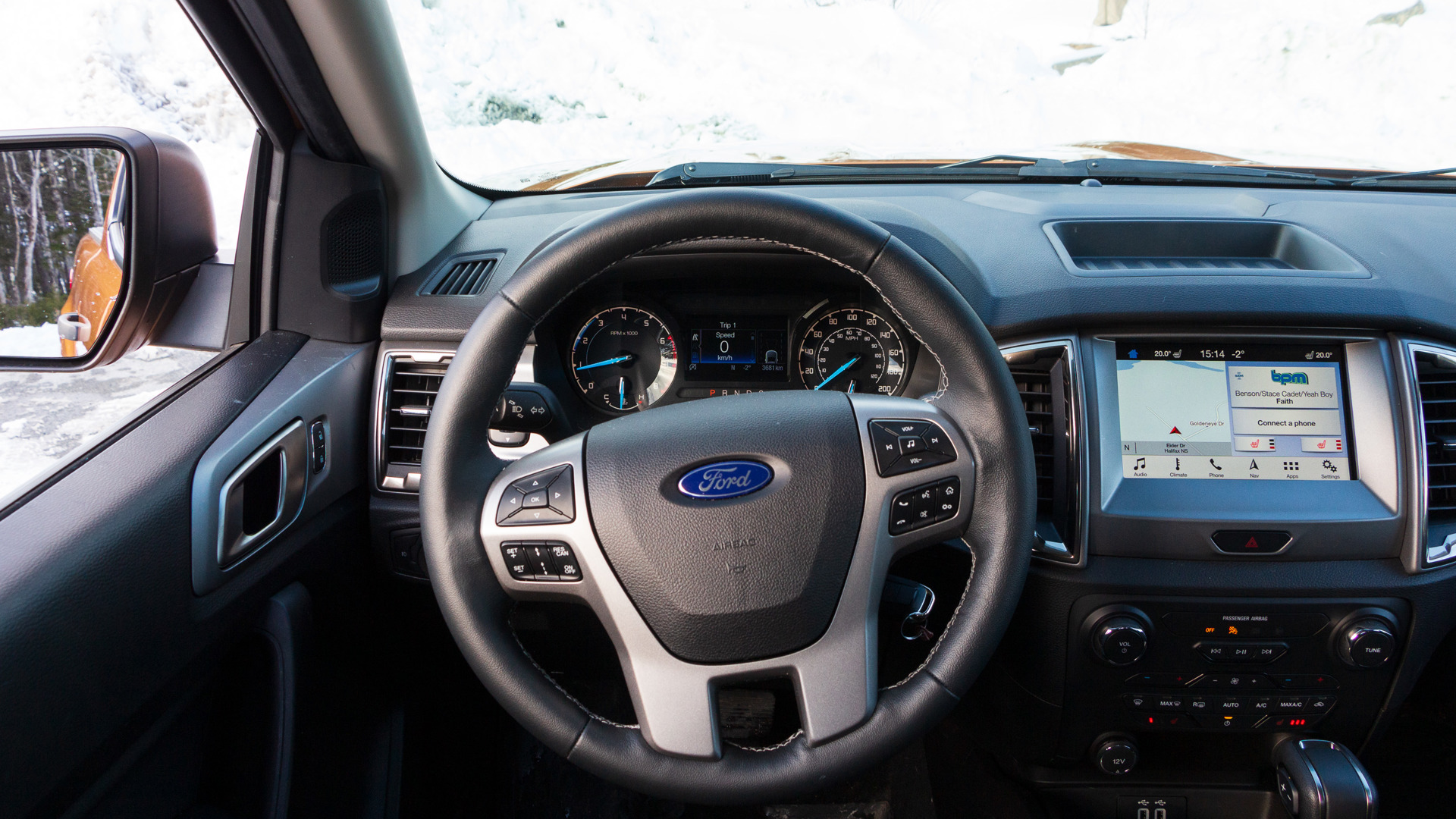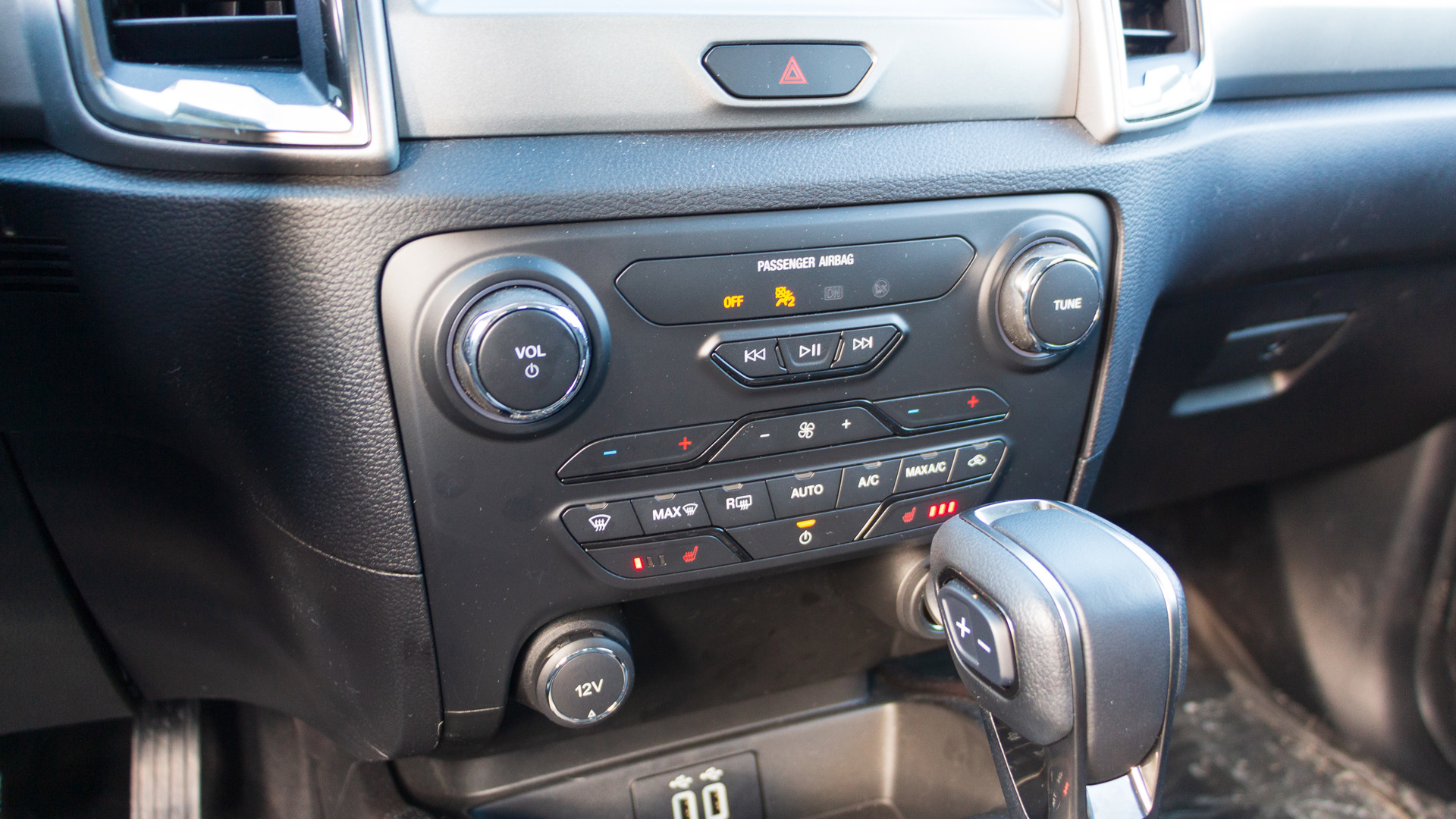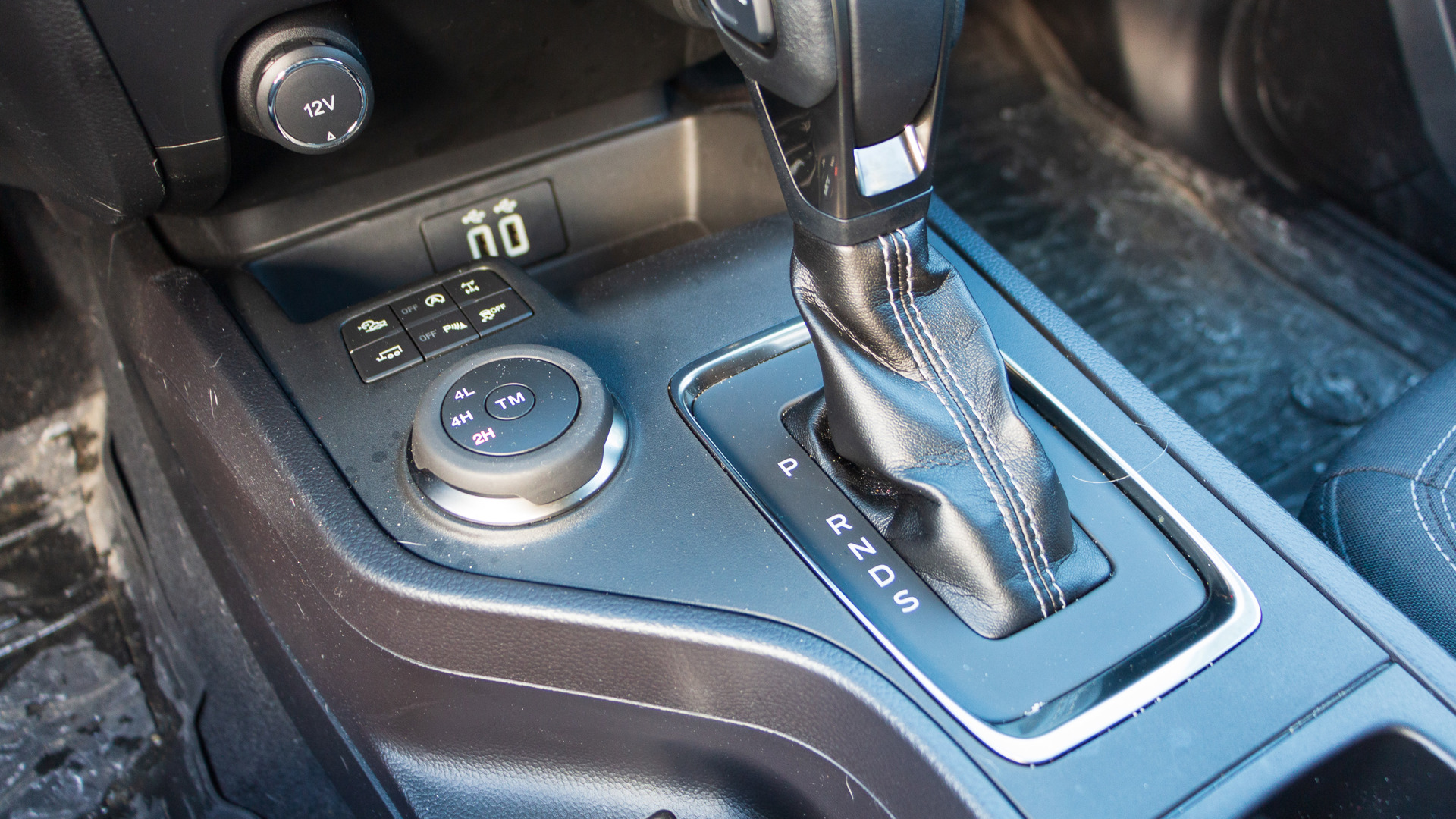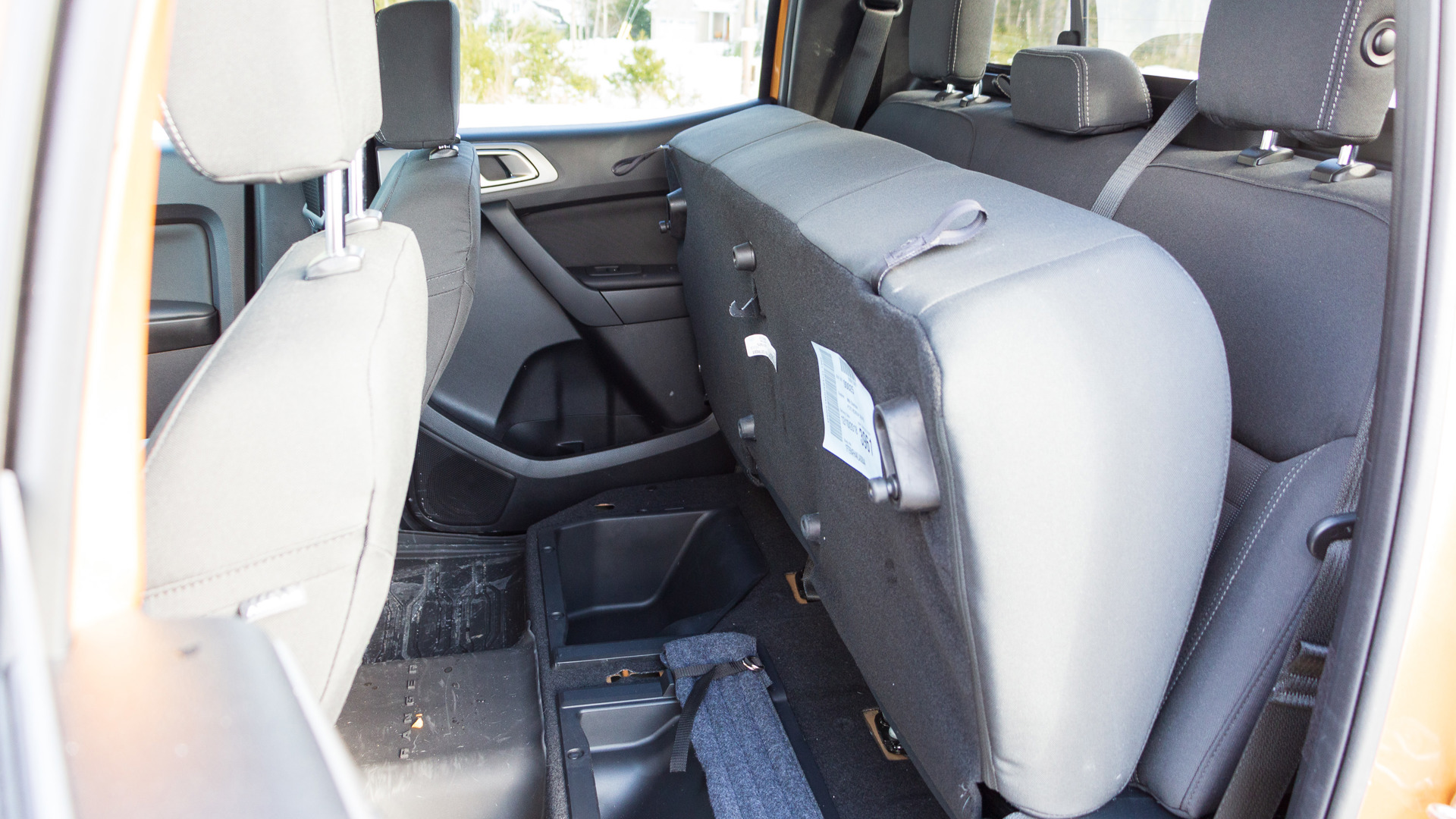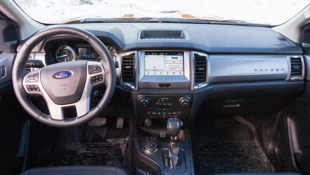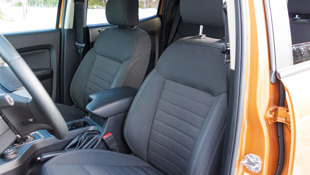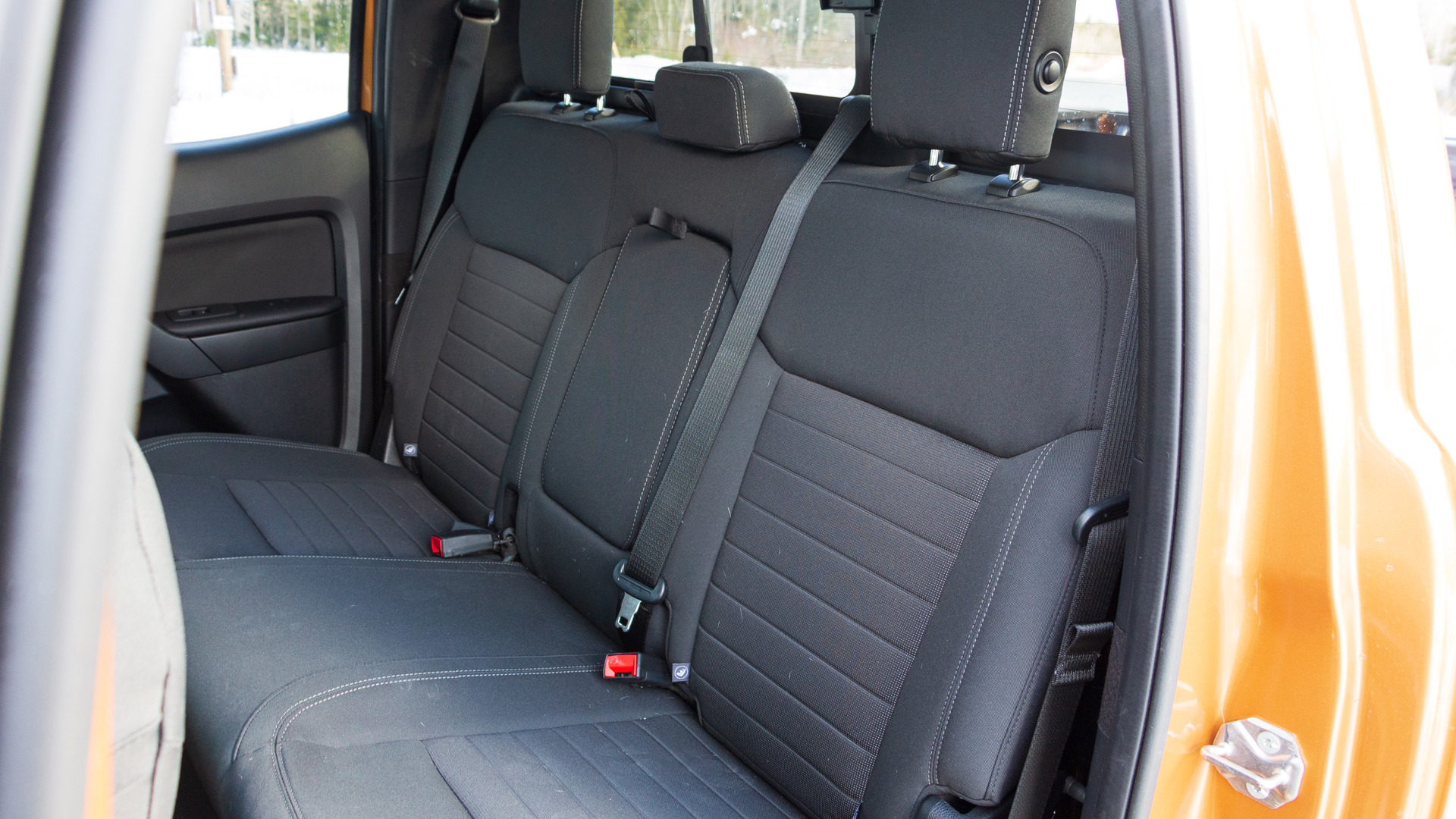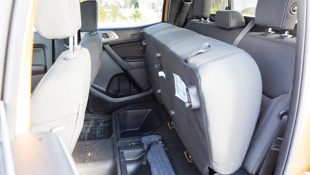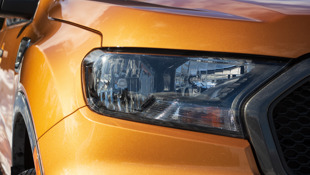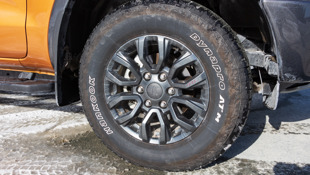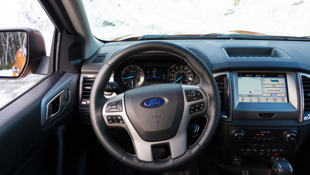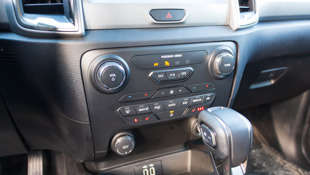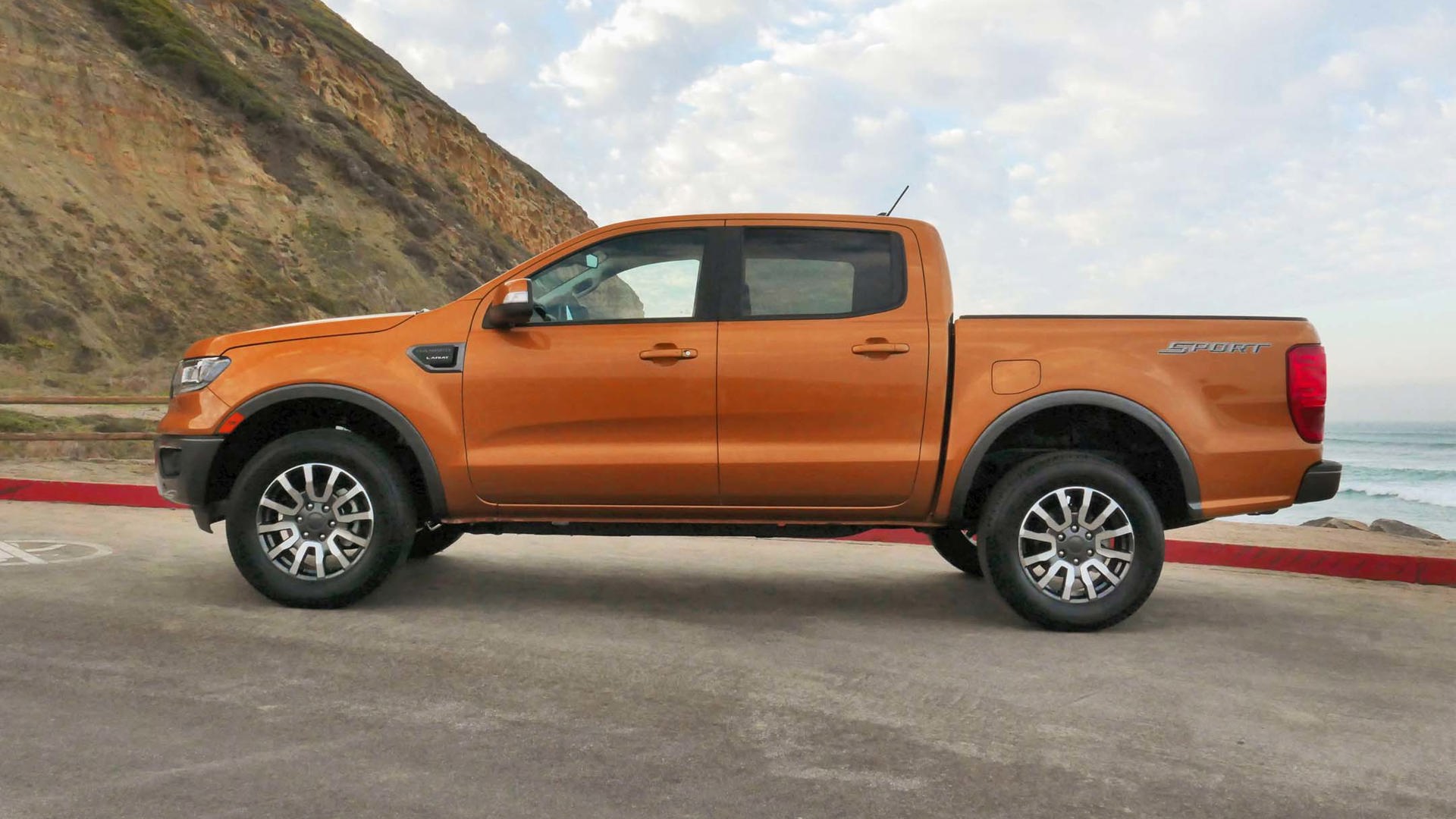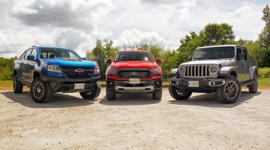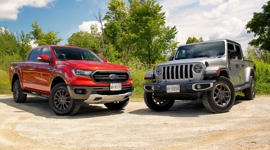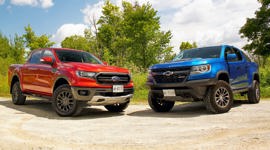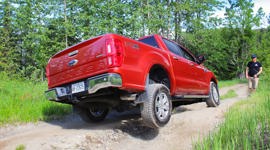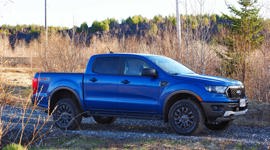 AutoTrader SCORE
AutoTrader SCORE
-
STYLING8/10
-
Safety7/10
-
PRACTICALITY8/10
-
USER-FRIENDLINESS7/10
-
FEATURES7/10
-
POWER8/10
-
COMFORT7/10
-
DRIVING FEEL6/10
-
FUEL ECONOMY7/10
-
VALUE7/10
How on earth does a 2011 Super Cab Ranger offer up 117 mm more rear legroom on paper than the 2019 Ford Ranger’s Crew Cab? How does that work? I haven’t been able to fit in the back of one of those old Rangers since I was 11 years old. There must be something wrong with the numbers.
The elephant in the mid-size truck room, though, is its big brother: the F-150.
Oh. That’s right. The 2011 Ranger still had those side-facing jump seats in the back, which is why they only offer 475 mm of hip space – a third of the new truck. When your legs are perpendicular to the cab, all sorts of space possibilities open up. Which is all a long way to say that this 2019 Ford Ranger couldn’t be more different from the truck it’s replacing.
It’s been eight years since Ford’s compact Ranger pickup left the market, but truck enthusiasts never stopped clamouring for the little pick ’em up. Now they’re finally getting what they asked for. The Ranger is back, with Canadian buyers getting the international version of the truck that never really went away, it just wasn’t available here.
The Ranger has, not surprisingly, gotten bigger. I bet the IIHS would have a fit if somebody tried to bring them sideways-facing jump seats today. As full-size pickups have grown into monsters capable of towing more weight than your driver’s licence allows and holding five full-grown adults, small trucks have gotten bigger too. Well, the cabs have, at least. Ford will sell you a Ranger with four real doors, but they know perfectly well you don’t want one with an eight-foot bed. Even full-sizers rarely get the big-box version these days.
So just how much larger is this new Ranger? In length, it’s not all that much different. At 5,354 mm long, this one’s 182 mm longer than the old one. Less of a stretch than you might expect for the extra interior space, but that’s what happens when you trim a few feet from the end of the box. It’s significantly taller than the model it replaces. The car-height 2011 Ranger squats 132 mm shorter than the 1,816 mm 2019, which can make the new truck a bit of a climb in.
It’s the width, though, where the new truck really shows its size. The 2019 Ranger is 130 mm wider than the old one. That and the height are why it looks like it has the footprint of a full-sizer despite being functionally smaller. All of these expanded dimensions mean that not only can actual adults attempt to sit in the back, but that the ones in the front should fit more comfortably too.
That interior resembles the rest of Ford’s SUV lineup, rather than copying the big brother F-150. So if you’ve spent time in anything from an EcoSport to an Explorer, you should be familiar with the layout. Ford’s Sync3 infotainment system is up front and centre giving you the ability to control the climate, nav, and audio systems. Ford also duplicates those controls with real buttons underneath the screen. Almost anything you can do in the screen you can do with a button, and the other way around. The buttons are suitably large for truck owners wearing work gloves, but the low mounting position can make them tough to use. Not because of the long reach, but because the markings don’t stand out well and they’re in the shade of the truck’s belt line.
Unless the sun was coming in at a very specific angle, or when they were illuminated at night, buttons like the temperature control were tough to find without a long look down. Ford will probably tell you to use the touchscreen in that case, but if you’re using the standard Android Auto or Apple CarPlay connectivity, it takes time and many button presses to get to the right screens.
The new Ranger gets a significant boost in payload and towing. My SuperCrew 4x4 tester could handle 709 kg in the box or towing up to 3,409 kg – both figures about average for this size of pickup. Normally, to test out pickup payload I toss in a bed full of topsoil I keep around just for that purpose. But since in late February that pile was a frozen mass I used something a little easier to find: snow.
Some math, a bucket, and a scale put a box full of hard-packed snow that had been rained on at right around 500 kg. Thanks to that rain and re-freeze, the snow stayed in the box for most of the week. Which wasn’t great for fuel economy or the ride.
Unloaded, the new Ranger felt very bouncy. While the big trucks have become ever more car-like, this one bounces and squirms like a full-size that’s a generation or two old. That shimmy of the pickup as the forces of a bump move from sidewall to ball joint to spring to damper to frame to body is very much present in this small pickup. While the roads in my area are far from mirror smooth, the jolting and bouncing in the Ranger was enough that I’m sure I left the seat multiple times even at residential road speeds. That was with the bed empty. With it full, the rebound on bumps was severe enough I was concerned that smaller items in the bed might be launched out. That solid mass of snow and ice wasn’t going anywhere, as I learned when I tried to remove it at the end of the week.
In turns, that feeling didn’t exactly inspire confidence. Hit a pavement crack or frost heave mid-corner and both ends of the truck felt like they were skipping across the pavement, something that took a few oscillations to settle down. If you’re planning on sipping a coffee behind the wheel of this rig, you’d best let it cool down a bit. And don’t wear a white shirt. My truck had the FX4 off-road suspension, but even off-road it seemed too bumpy and jarring. The standard suspension may smooth things out a little. Ford’s Roll Stability Control uses sensors that detect roll and turning rates, then applies the brakes to help keep the wheels planted. It must have been working overtime, since the Ranger had an air of eau de brake pad whenever I arrived at a destination more than a few minutes away.
One thing the old and new Rangers have in common is under the hood. Sort of. They both came with 2.3L four-cylinder engines. And while one of those was far too small for a truck (just 143 hp), it’s not the new one. The 2.3L Ecoboost four offers 270 hp and 310 lb-ft of torque. That engine, along with the 10-speed automatic, is the best part of this little pickup.
Even loaded with that snow and passengers, the 2.3L had plenty of grunt. Max torque arrives at a suitably low 3,000 rpm, and it stuck around throughout the rev range. It made this pickup positively quick, and made lots of Focus RS-like noises. And while they aren’t quite a V8’s rumble, still warmed the heart of this gearhead. The 10-speed auto was mostly transparent in operation. It only made some odd gear choices on one or two occasions, but they were minimally intrusive.
My observed fuel economy in this truck was affected by the week of –20° mornings and near-daily snowfall that we experienced that week, along with the half-tonne of snow in the box, but when it wasn’t plowing through slush and snow with four-high and the diff locked, it fell close to the 11.8 L/100 km city rating.
This truck has the technology package, which adds adaptive cruise, as well as navigation to the auto high-beams, blind-spot alerts, lane-keep assist, and emergency braking that already come with the XLT’s standard Co-Pilot 360. The tow package, while it comes with a class IV hitch and wiring harness plug, doesn’t add a trailer brake controller – something that would be handy if you’re anywhere near max tow on this pickup.
The elephant in the mid-size truck room, though, is its big brother: the F-150. In later years, the old Ranger was selling for as low as $10K new. This new one is not going to go that cheaply. My XLT SuperCrew tester had a base price of $40,839, which puts it within a few thousand dollars of a similarly equipped F-150 that offers up more space and a nearly identical fuel economy rating. And, quite frankly, a better ride and interior. But it’s still significantly larger, which does impact daily drivability. I was manoeuvring down some extremely narrow snow-lined streets in my time with the Ranger, and on at least one occasion, the extra width of the F-150 might have meant backing up and finding another way.
The 2019 Ranger fits into a sweet spot in the truck size market. It offers impressive payload and towing, excellent power, and plenty of cabin space for most families of four. If the full-size truck is the new Taurus, then this is the new Fusion. If you’re looking for a replacement for your old Ranger then this probably isn’t it. This will never be that cheap and somewhat cheerful compact pickup. But it’s not intended to be that. As a Goldilocks pickup for many buyers, this one might be just right.
| Engine Displacement | 2.3L |
|---|---|
| Engine Cylinders | I4 |
| Peak Horsepower | 270 hp @ 5,500 rpm |
| Peak Torque | 310 lb-ft @ 3,000 rpm |
| Fuel Economy | 11.8/9.8/10.9 L/100 km cty/hwy/cmb |
| Cargo Space | 5' (152 cm) box |
| Model Tested | 2019 Ford Ranger XLT Sport FX4 |
| Base Price | $40,839 |
| A/C Tax | $100 |
| Destination Fee | $1,800 |
| Price as Tested | $47,209 |
|
Optional Equipment
$4,470 – FX4 Off-Road $1,400; Technology Package $850; Running Boards $700; Trailer Tow Package $600; Spray-in Bedliner $600; Floor Liner $170; Splash Guards $150
|
|
